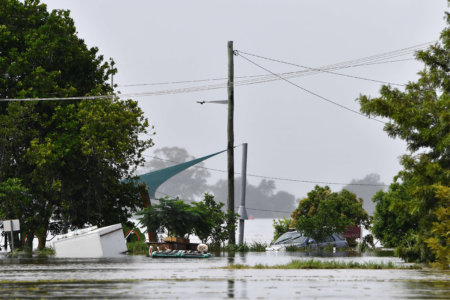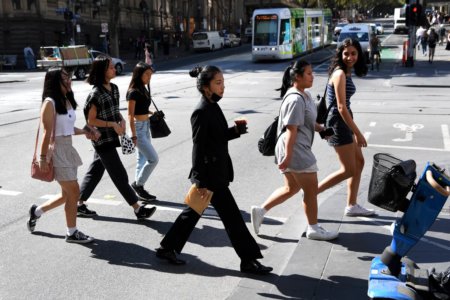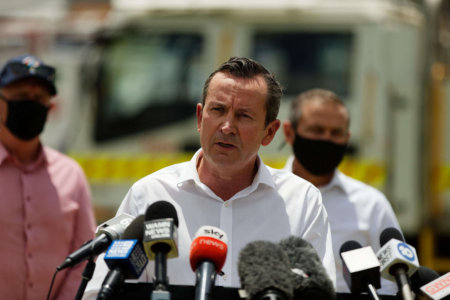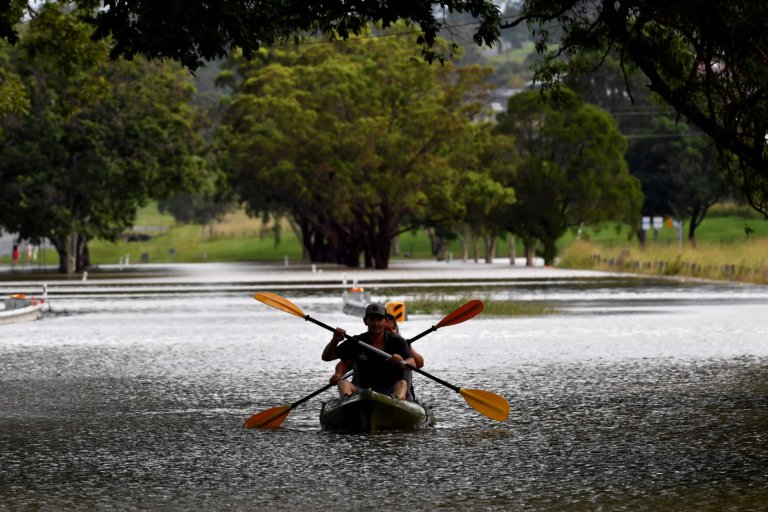
International students have been advised to keep abreast of updates from their respective universities as Australian floods worsen. Days of rainfall has resulted in the flooding of major communities in eastern Australia, submerging thousands of homes and leaving many stranded.
Affected areas include Queensland and New South Wales. More than 15,000 homes have been flooded in Brisbane, and the city of Lismore has seen thousands of residents evacuated, with many rescued from their roofs.
International students have not been spared from the damage. “Our house was severely affected by the devastating flood that occurred in Brisbane,” tweeted one student who claimed to be a student at the University of Queensland. “We lost most of our stuff including clothes and other essentials.”
Universities in the affected areas have been forced to close their campuses, including Southern Cross University, University of Queensland (UQ), Queensland University of Technology (QUT), the University of the Sunshine Coast (USC) and Griffith and Bond universities.
For most universities, teaching has been halted for the week. UQ has warned students not to visit campus locations to ensure their safety.
All UQ locations will remain closed today and Wednesday. There will be no teaching this week. Emails will be sent to staff and students with more information later today. pic.twitter.com/3np6niIyQB
— UQ News (@UQ_News) March 1, 2022
Advice for international students in Australia
The Australian government has extended an offer of financial assistance to affected citizens and visa holders, though international students are not eligible. Some have turned to setting up GoFundMe pages to cover the cost of their losses.
The Australia High Commission New Delhi has advised international students travelling to their universities to visit the Bureau of Meteorology website to avoid flood-affected areas. Students were also advised to check with their airline carriers in case of flight cancellations, keep in contact with their education providers, and follow the advice from local emergency services and police.
International students affected by the Australian floods are encouraged to keep in close contact with their universities. Many are offering financial and other forms of support. The University of Sydney has opened up bursary assistance to international students affected by the floods. Deakin University has detailed a range of assistance schemes, from financial aid to extensions on assignments and counselling services. Southern Cross University has detailed similar assistance.
Our #QUT staff are currently working hard on both main campuses monitoring the flood waters and managing the safety of the precincts. Thank you 💙
Stay safe pic.twitter.com/e8F6uvN1dL— QUT (@QUT) February 28, 2022
Other universities have sent email updates on financial assistance schemes and other forms of support.
Australian floods worsen as the week goes on

Families look out at a flooded street in Lawrence. Source: Saeed Khan/AFP
Rainfall continues to devastate Queensland and New South Wales. A fourth death in Lismore has been confirmed after water levels reached life-threatening peaks. In Ballina, New South Wales, flood water reached a high tide, with surrounding rural areas overwhelmed. State Emergency Services (SES) have predicted that 6,000 properties will be impacted by floodwater, but power and communications outages are preventing them from fully fuelling their rescue vessels. Australian not-for-profit Surf Life Saving has been called to assist.
Ballina’s mayor Sharon Cadwallader says the area is in need of “desperate help” as phone and internet services are failing. “We are having major communications issues, how can people call in for help if they can’t get through,” she said. “We need desperate help, we need helicopters, we need everything thrown at Ballina at the moment.”
Officials are ordering Sydney residents to evacuate after a “rain bomb” exploded on the city and its surrounding areas. A major flood warning was issued on Wednesday for the Hawkesbury and Nepean rivers in the city’s west and north-west. In an outer South Western Sydney suburb, the Warragamba Dam has spilled over, threatening to overwhelm the already struggling city.
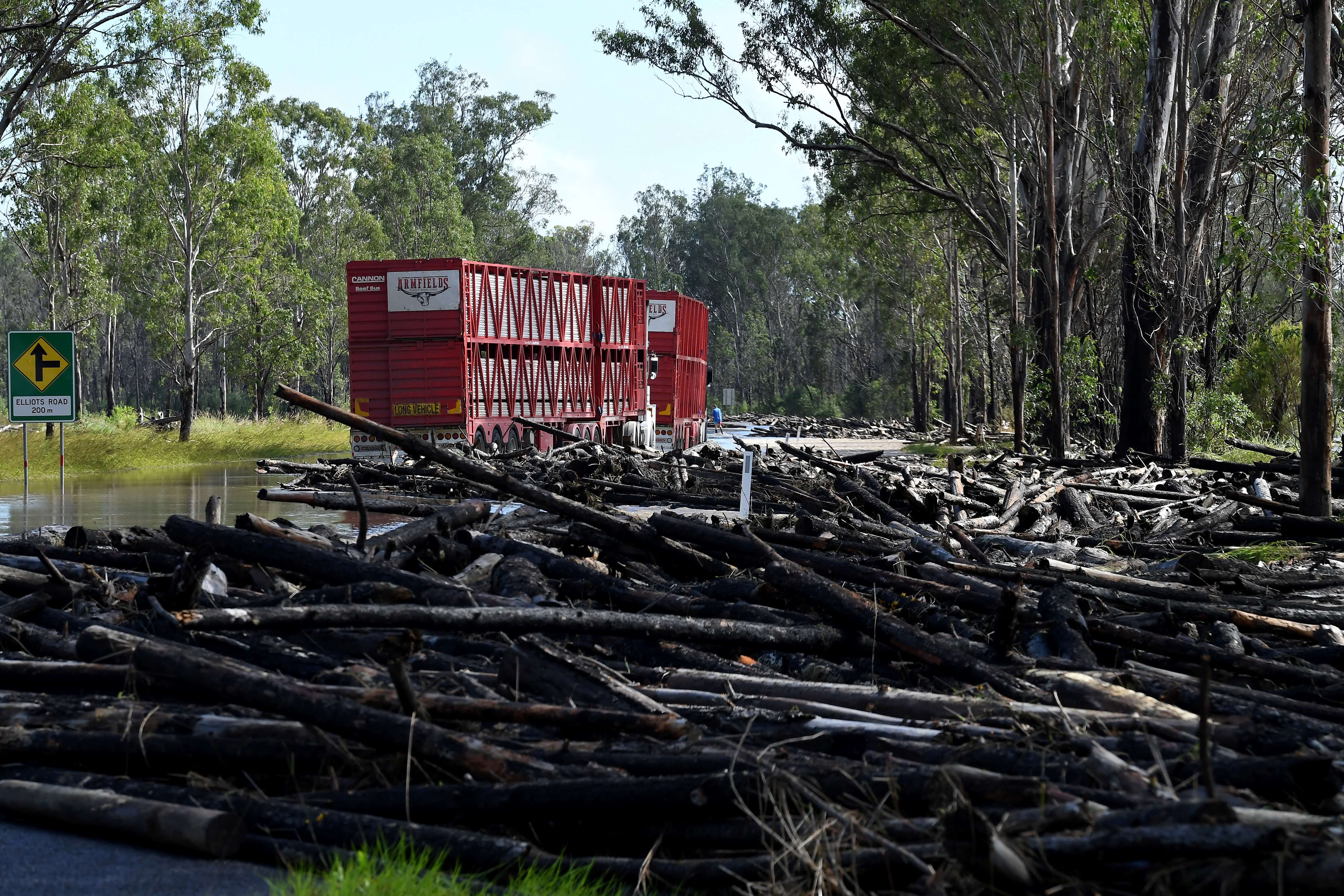
Trucks are left stranded as road closures affect travel. Source: Saeed Khan/AFP
“We are expecting heavy rainfall over the afternoon into the night and into tomorrow,” an official said, according to the Guardian Australia. “Warragamba Dam started spilling at 3 a.m. this morning. I say to those people in the areas of Richmond and Windsor, if you are getting a knock on the door, if you are asked to leave, please leave. Please do this for your own safety.”
Queensland Premier Annastacia Palaszczuk warned that more storms are expected over the next few hours, which is likely to bleed into the weekend.
“There is a low probability but potentially high impact scenario of isolated, very dangerous thunderstorms with giant hail, destructive winds, and locally intense rainfall during Thursday afternoon and evening. This could lead to localised rising in creeks and streams, that respond quickly to heavy short duration rainfall. We are not over all of this, we are not out of the woods yet.”
Louis Hollman, of Louis Hollman Electrical, spoke to the Guardian Australia about travelling out in a boat with two colleagues to rescue stranded residents. “I was seeing houses submerged in water, families losing everything,” he said. “Now the water is going down, we are seeing what is left.”
According to Hollman, most switchboards and electric metre boxes need to be replaced. His wholesalers in Lismore were submerged during the Australia floods, leaving him without gear. “Getting some power back is essential,” he said, but having “no power makes it even more unsafe”. “You can’t cook fresh food, or keep water cool. At night time, even having just one light makes you feel less lonely.”
Meanwhile, supermarkets are struggling to get stock, facing an onslaught of grocery shortages as road closures block trucks from delivering essential goods. “The floods have cut off highways and hit supermarket supply chains across the region,” reports Christopher Knaus for the Guardian. “Woolworths and Coles have both shut down a number of supermarkets directly affected by the floods and implemented purchase limits elsewhere, leaving those in the disaster zones struggling to get the basics.”








